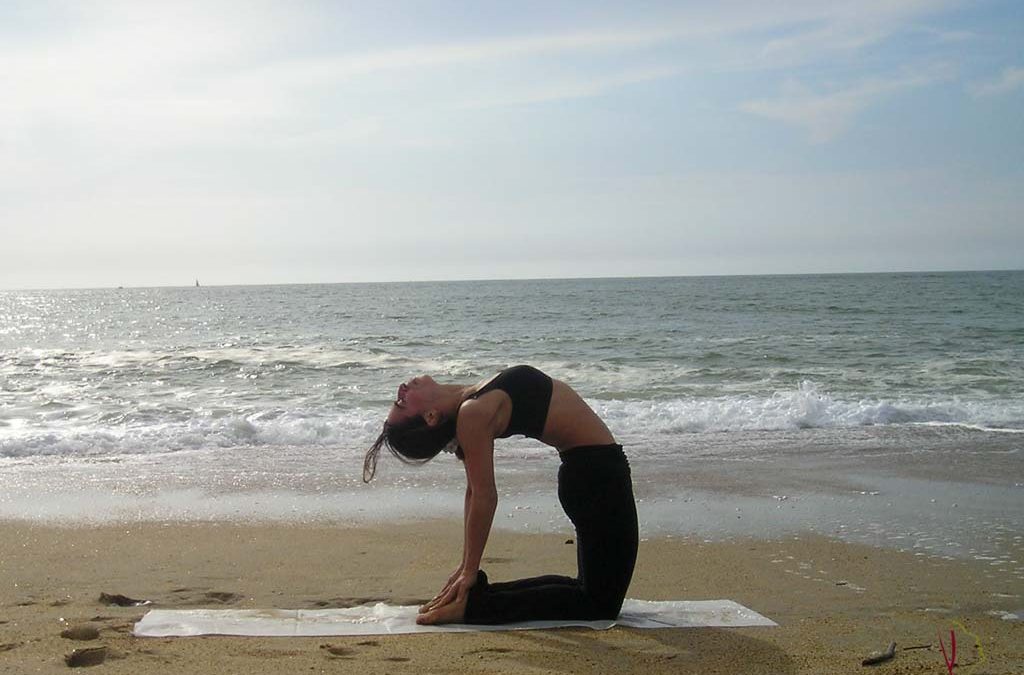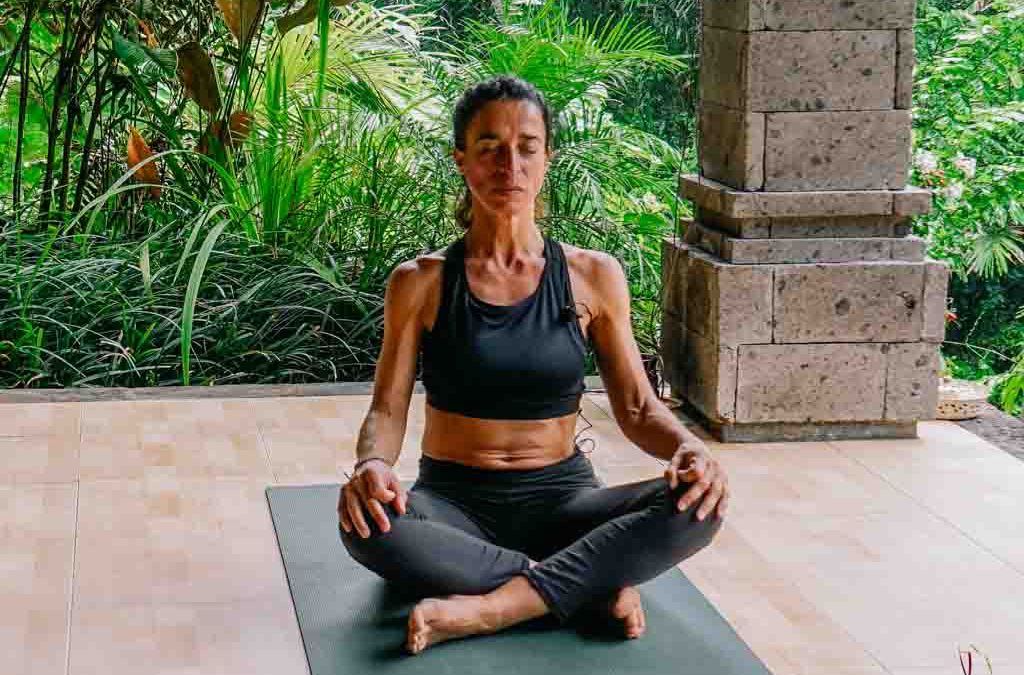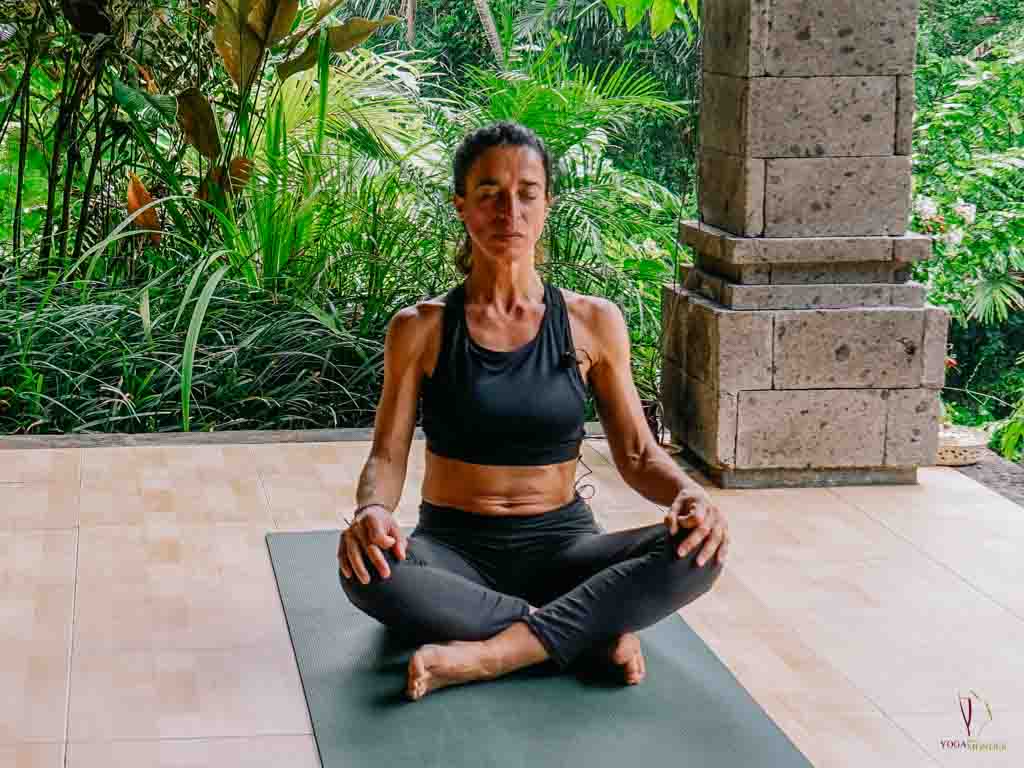
YOGA FOR ALL, ALL FOR YOGA
by MartineY2M | Jul 10, 2021 | Yoga
Temps de lecture : | Reading time : 7 minutes
For several decades the craze for the practice of yoga continues to grow. Classes abound and training to become a Yoga teacher is multiplying.
And as the practice democratizes, yoga styles flourish; some serious, others wacky. The fact remains, however, that in many cases, too many choices kill choice. Too many people still indulge in a style of yoga without really understanding what it’s all about. Either, these people come out convinced of their first session, or they consider that Yoga is not a practice for them and then move on to something else. Without knowing what their expectations were, the teachers could not direct them towards a style that could have matched them.
In the backbone of my classes, workshops, or retreats, the question of the different styles of yoga is often addressed to allow new practitioners to find their way around. Some Yoga teachers claim a lineage, a well-defined style and will then follow this path. Others – like me – prefer not to lock themselves in a given style, opting for the freedom to create without compromising the integrity of this discipline. Being a Yoga teacher cannot be improvised. Understanding what Yoga is and sharing it takes time. To respect the teachings is to respect oneself and the practitioners.
Yoga is by no means elitist, exclusive. Yoga is not the property of anyone. It is a personal practice that aims to support personal work to allow to establish a harmonious relationship to oneself, to the other and to one’s environment.
On my part, I followed a hatha yoga teacher training after practicing various styles of Yoga (Iyengar, Sivananda, Kundalini, Ashtanga and others) drawing inspiration here and there.
The practice of yoga is part of a global lifestyle. Self-awareness, the world and meditation are invited during a yoga practice but not only these. The appreciation of a universal dimension -where the ego is not exacerbated – makes it possible to understand our environment. To confine the practice of Yoga to a practice only postural, is to forget the richness of this discipline several millennia. It is forgetting that Yoga is the union of body and mind, of the self and the other, of the rational and the emotional. Yoga allows the harmonization of our polarities, to accept them to better express them.
Each person being unique, I remain convinced that a Yoga practice is very personal, and for it to be better able to meet our personal needs, any practice must also incorporate the elements of an energetic work (Chakras) and associate it with Ayurveda. Not always easy in a group practice, it is true.
TELL ME WHO YOU ARE AND I WILL TELL YOU WHICH STYLE OF YOGA SUITS YOU
Below is a list – not exhaustive – of yoga styles that are most often proposed.
# HATHA Yoga
Hatha is a Sanskrit word and expresses strength, union. The union of the Ha (sun) with Tha (moon). Yoga itself being the search for a union. The union can be understood on various levels, the union of the physical and the mental, of the self and the universal, of the breath and the energies etc. This Yoga is considered the mother of all Yoga.
The best-known style in the West, it is often referred to as soft. However, Hatha Yoga can be dynamic; it will depend on the teacher. The content of the sessions is not fixed, and each sequence is designed to incorporate a time of action and rest, postures and counter postures to bring a body-mind harmony and an appreciation and feelings of the senses. This style of yoga has the particularity of always including a time of pranayama*, asanas* and dhyana*.
# IYENGAR Yoga
Created by B.K S Iyengar, the focus here is on the alignment, and the perfect positioning of postures. It requires the use of straps, blocks, chairs or other supports as an aid to the practice. A yoga that can be intense because it requires to stay sometimes a long time in the same posture. A style that will appeal to those who like the precision of an asana. Other might be deterred by what can be seen at times as a rigid practice. I tend to recommend this style of yoga that gives pride of place to extensions and stretches, to beginners who wish to practice in class to fully understand the alignment of the body, or for a practice turned towards a therapeutic Yoga.
# ASHTANGA Yoga
Initiated by K.Pattabhi Jois, the Ashtanga style (nothing to do with the 8 Asthanga* precepts of Yoga) is based on the link of postural Yoga and breathing according to a defined sequence of postures. This style of yoga consists of 6 series that are always similar and are done in a specific order. At each level corresponds its series of postures. We do not move on to the higher series until the previous level has been mastered. Mastering a level can take years, the focus being on postures, not progression.
The last decade has seen the emergence of Power Yoga or Hot Yoga…both are usually Ashtanga inspired styles. Their names give a hint how demanding those styles can be. You have been warned.
# SIVANANDA Yoga
This style of Yoga requires rigor and is oriented around different paths of Yoga; Karma Yoga (selfless service), Bhakti Yoga (Yoga of devotion), Raja Yoga (meditation), and Jnana Yoga (Philosophy of Yoga). It is a Yoga that does not stop at the teaching of postural yoga alone. This style was initiated by two Swami first Sivananda himself and then Swami Vishnu Devananda. This Yoga can prove to be repetitive for some because the postures, and sequences are always the same. However, this style of Yoga, allows to apprehend different techniques of breaths, to explore Mantras*,Bakti Yoga, Sadhanas,* Satsangs* and the various aspects of yogic philosophics.
# KUNDALINI Yoga
A style of Yoga that draws its inspiration from the energies and chakras. Focused on breathing and the expression of energies via postures and meditation. Songs, mudras* and breathing are the anchors of the practice beyond physical postures. However, make no mistake as postural Yoga is demanding both physically and mentally. Far from the aerobic style of some modern Yoga, this style of Yoga is less about the alignment of the physical body than about the alignment of oneself and its energetic body.
# JIVAMUKTI Yoga
This form of Yoga created by Sharon Gannon and David Life implies that we consider Yoga for its global dimension. For the founders of this style, practicing Yoga means recognizing the importance of environmental and animal well-being. To be vegan is to be respectful of the animal cause. The 5 main aspects of this yoga are; Shastra*, Bhakti*, Ahimsa*, Nada*, Dhyana*. A typical class involves, the expression of an intention, a devotional song, an awareness of breathing, followed by a postural practice before ending on a relaxation and meditation. Respect for spirituality is just as important as physical practice.
# VINYASA* Yoga
Vinyasa means the synchronization of breathing to movement. I like to remind my students that every Asana is initiated by breathing (not the other way around). Also, each style of Yoga as soon as it fits into a sequence is a Vinyasa. The Suyra Namaskar* is definitely the best known vinyasa. This style of yoga, which advocates a fluid practice, is therefore found in the various styles of Yoga as long as the breathing-movement coordination is respected. Some yoga schools have taken up this style, recommending a more sustained flow of a sequence that wants to be rhythmic according to the breath. Be careful though, it is important to remember that everyone has their own breathing rhythm (which may be different from the teacher). Respecting your breathing means respecting yourself and progressing in a healthy and serene way. I like to say that every asana must have a beginning, a middle, and an end… rushing in, getting out of a posture can bring discomfort, pain and is the opposite of what Yoga teaches, namely to be there in the here and now, with ones breathing, posture, and mind.
# ANUSARA Yoga
Relatively recent, this style of Yoga created by John Friend in 1997 emphasizes the importance of spirituality in postural practice. Little practiced in France.
# BIKRAM Yoga
Founded by Bikram Choudhury (based on the work of B.C Gosh a body builder and Hatha Yogi* Indian brother of the respected yogi Paramahansa Yogananda).
According to Bikram the practice of Yoga in the West must be done under the conditions of climates similar to those of India. Temperatures are therefore around 40 C with a humidity of 40%. 26 postures are recommended. Attention, no correction is given to the student. Mirrors allow the student to self-correct (!). Often criticized for its lack of body-mind relationship, this practice is nevertheless acclaimed by those who seek the athletic side of the practice. Hot Yoga or Power Yoga are two other styles of Yoga practiced in a heated environment, but the content of the sessions will vary depending on the teacher.
# YIN Yoga
This very slow form of Yoga includes elements of traditional Chinese medicine and the principles of Taoϊsme. The postures are held between 45s and 5 minutes with the objective of touching the connective tissues and modifying our flexibility and the circulation of fluids in various parts of the body. The slow pace of practice facilitates a meditative state. The postures are static and often the practitioners exercise this style in addition to more energizing Yang type of Yoga.
The world of Yoga is beautifully inspiring. Yet, as word of caution I will recommend anyone wishing to start a practice to speak with their teacher to better understand the style that might best suit you. Be patient when it comes to see results. A group class is clearly great to feel part of a community, but 1:1 class tends to offer greater longlasting benefits. The classes are tailored made to the student needs, offering a holistic approach to the student ‘s physical, mental and emotional well-being.
Do not be afraid of experimenting different style of Yoga or going with different teachers. Two Hatha Yoga classes may well be very different from one teacher to the next.
Feel free to challenge your teacher…if you feel a posture is not right ask for assisting or adjustment. We are all very different and the perfect posture does not exist.
Yoga cannot be a one fit all practice. Yoga work wonder but it can also prove harmful if not done properly.
Notes: Although delighted to be able to share information these articles are only offering general information, and generate an interest in digging further into the subject if you wish 😊
If you are interested in learning more about my Yoga offering I invite you to drop me at : Contact Us
Glossary
- Ahimsa = Non violence
- Asana = posture
- Ashtanga = 8 pillars of Yoga
- Ayurvéda = Ayur (Life) Veda (Knowledge). Ayurveda is the sister discipline of Yoga
- Bhakti = Devotion
- Dhyana = Meditation. Reference to Ashtanga (Eight Pillars of Yoga)
- Mantra = Visual representation, sound used for its meditative and spiritual qualities
- Mudras = Positioning of the fingers/hands in sight for energetic/medium work
- Nada = Music
- Pranayama = Respiration
- Satsang = Sat (Vérité) Sang (Communauté)
- Shastra = Scriptures
- Surya Namaskar = Surya (Soleil) Namaskar (Greeting). A sequence composed of 12 postures
- Vinyasa = Fluid sequence combined with breathing
- Yogi = Male Yoga practitioner
- Yogini = Female Yoga practitioner



